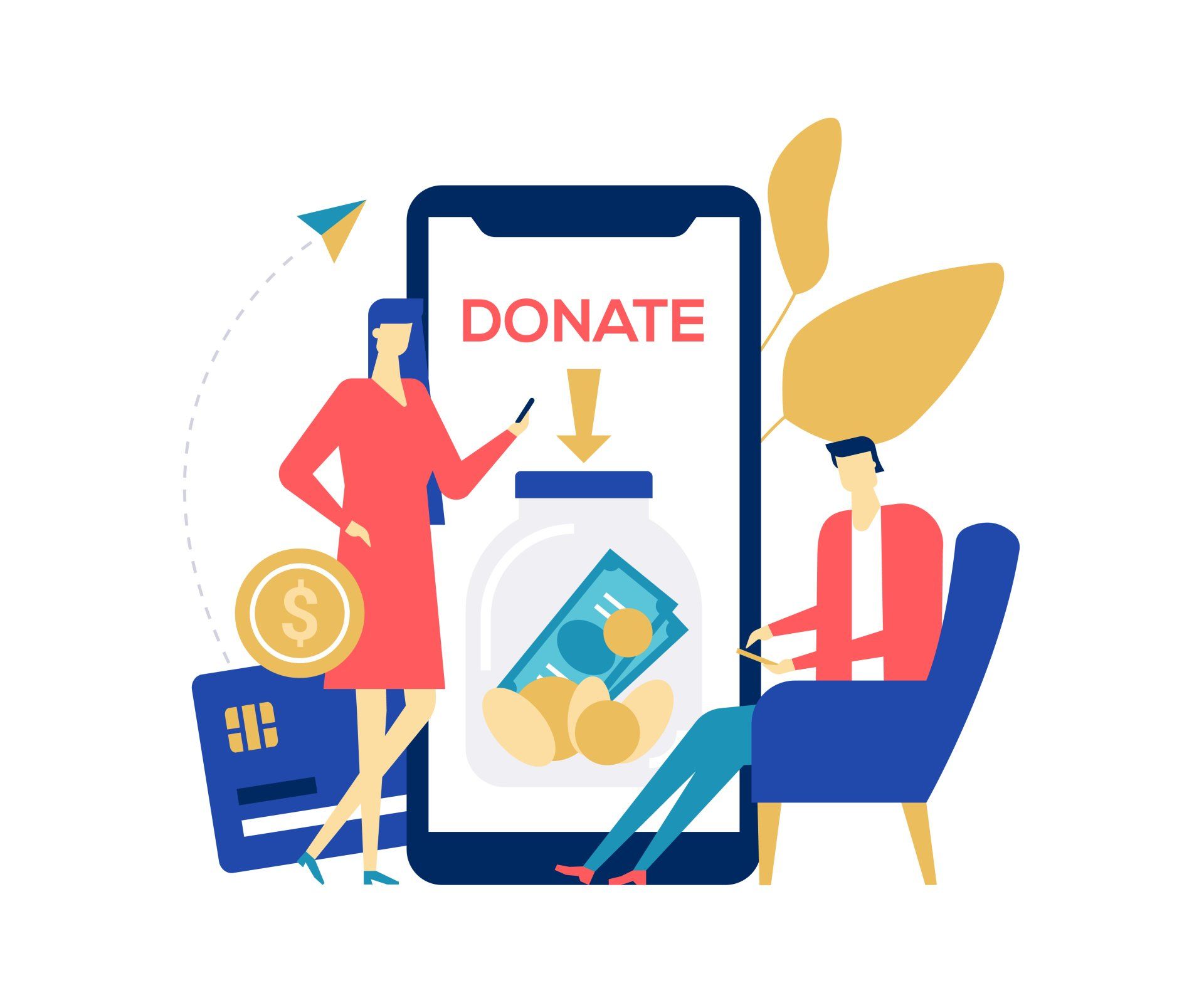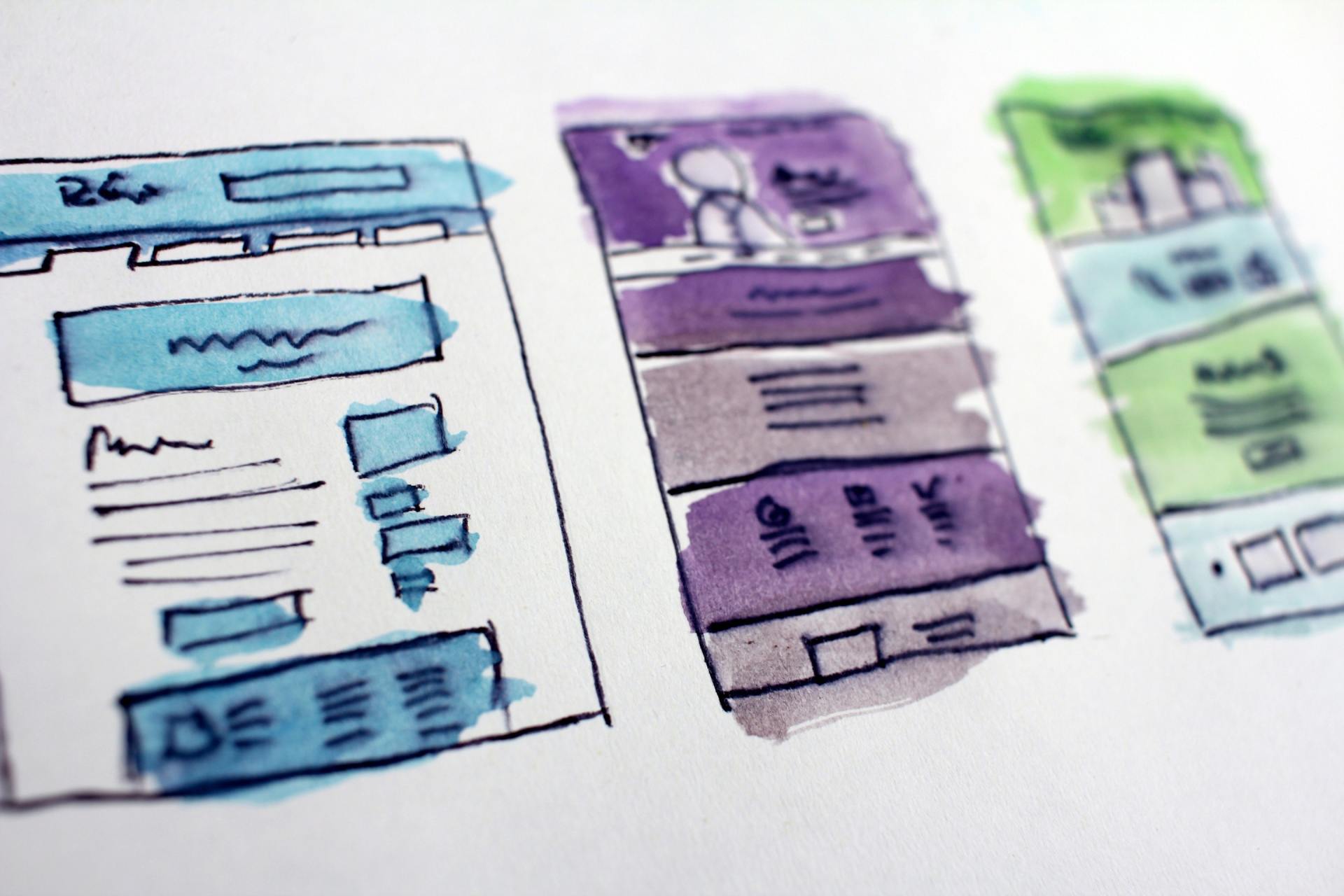Blog Layout
6 Best Practices to Generate More Leads on Your Website
April 15, 2020
I recently stumbled across an incredible website called Internet Live Sites. If you love numbers and data, this site will fascinate you. The site shows the number of active Internet users worldwide, number of websites, number of emails sent, number of Google searches, photos uploaded to Instagram, Tweets sent, and active Facebook users. They even show you how much electricity is being used by the Internet alone. Pretty cool!
While all these numbers are impressive, it also puts into perspective just how big the Internet is. As of writing this blog post, there are currently 1.7 billion websites out there in the world. That's right BILLION with a "B." So how do you stand out in a giant sea of websites? How do you ensure that your website is optimized to generate leads for you?
While there are many different strategies, there are best practices that all websites should implement in order to ensure they are generating leads to fuel the pipeline for their sales team. Here are 6 best practices for you to consider to ensure your website generates the leads you need for your business to grow.

Do you know your audience?
This seems like a no brainer, but you would be surprised how many businesses have content on their website that doesn’t speak to their audience. So when you sit down to either start putting content together for your website or you are doing an audit of your website content, you should consider five things:
- Who is your primary audience?
- Is there a secondary audience that can influence or inform your primary audience?
- How will they find your site online?
- Is your content speaking to their pain points?
- Are you solving the common problem they need solved?
So what does this look like?
Say you are a lawyer with your own law firm, your primary audience may be existing clients, but your secondary audience may be other attorneys, others working in law offices, or prospective clients who may need your services in the future. They are more than likely searching online for help with whatever their legal needs may be. What are they searching for? Do you practice in very specific areas?
If so, you want to make sure that can be found on your website easily. More importantly, make sure that those terms are included in the headlines and sub-headers. You want to make sure that you are speaking directly to those pain points and pointing out how you are the solution to all of their legal issues.

Get rid of the jargon
They already know you are the expert. Most of the people online looking for your services may not know the technical mumbo jumbo
that you know. You have to make sure your content is not only easy to understand but simple for them to remember. You should consider spelling out acronyms if needed to be used in your content. Don’t assume they know what you mean. By all means, avoid insider language. That’s great that you know what it means, but you aren’t buying your services, they are.
For example, let’s look at this sentence:
The journalist grabbed a SOT from the MOS, drove back to the station and put the story in the can.
Do you know what a SOT or a MOS is? Did they literally put in a can? It leaves the average reader confused about what you mean and now they need to stop what they are doing and look up what SOT and MOS means.
What if you said:
The journalist interviewed a bystander about the incident and recorded her statement to include in the story.
Now that is more like it! It is easy to understand to follow, isn’t it? The average reader is going to better understand what you are trying to say when you drop all the jargon and get to plain language. Keep it simple and easy to follow. Your clients will appreciate it.

Make it easy to skim
If you are anything like me, when I see a bunch of text on a website, I tend to mentally check out. Even if I am interested in what the topic is. Something about a lot of text makes me not want to read it. Apparently I am not alone.
A study conducted by Nielsen Norman Group discovered “that 79 percent of our test users always scanned any new page they came across; only 16 percent read word-by-word.”
This is why isn’t important for your content to be scannable.
So, how do you do that? A few things actually. Here are some areas to focus on.
- Use bullet points or numbered lists. Break up that large body of text if you can and put them in an easy-to-digest list. Not only is that easier to read, but it is also easier for people to remember your key points.
- Bring attention to keywords. Make the text bold, highlight, underline, whatever you want to draw attention to the keywords in your content. Hyperlinking is another good way to draw the idea. Just be careful not to take people away from your site.
- Leave room for white space. By leaving empty space around your text, you are allowing for nothing else to compete with the attention of that content. I know what you are thinking, “That’s just wasted space for me to get more content on the page.” However, the extra space makes it more enjoyable to read.
- Use subheadings. Break your content up into sections so as people are scanning, they can find exactly what they are looking for quicker. Refrain from making the subheaders clever. Instead, think practical here. You want user to not be frustrated with navigating your content.
- Reduce content more than you think. This last point is key. Shift your mindset from conventional writing and think more marketing here. You want to say everything as concise as possible for those people going through your site quickly. Hit the high points. Fill in the gaps once they convert.

Keep them clicking
You want them to know enough information that they are ready to either make a decision to purchase, reach out to talk with someone or click on further information in order gain more knowledge on what you offer. In turn, it moves them through your
sales funnel.
CTAs (call-to-actions) are a great way to cause people to continue digging into your site. The more time someone spends on your website, the higher probability they will convert. You have to define what a win is first. This will help you in what the CTA should be.
There are essentially three types of CTAs to consider on your website to help convert page views to paying customers and filling your sales funnel. Consider these as you think through your CTA’s:
- Informational CTAs - With informational CTAs, you want to offer a piece of content that helps the visitor to get more information on a particular topic. You will need a landing page for this CTA that highlights whatever piece of content you are offering. Examples of informational pieces of content are ebooks and white papers.
- Problem-solving CTAs - With problem-solving CTAs you want to provide content that help solve a problem the visitor needs solving. Examples of problem-solving pieces of content are testimonials and case studies.
- Giveaway CTAs - With giveaway CTAs, you are wanting to offer a demo or a free trial of your product or service. The goal is to get the visitor hooked on your product that when the demo or free trial ends, they are ready to purchase. This CTA needs to highlight how you can help them out above all other options that are out there. What makes you different.
Maybe the win is to gather emails or phone numbers so you can reach out to the visitor. Maybe the win is to have them share information that you have or you want them to watch a video for further information. Whatever it may be, you want to keep the CTA simple to follow and have a plan for what you want them to do. If it’s confusing or involves too many steps, most people will give up and leave.
Placement is also important. You want your primary CTA to be “above the fold.” All that means is you want the visitor to see your CTA without having to scroll. That doesn’t mean you want to load the top half of your websites with CTAs. You want to make sure you are spacing them out. Just make sure you have that primary CTA at the top.
Present Your Value Proposition
You know your businesses value proposition. It’s your business for crying out loud. But does your viewer know it? Is it laid out clearly on your site? Visitors should clearly see the value of doing business with you.
Opera is a great example of presenting their value proposition.

When someone visits their website, it’s clear that they are a web browser. It’s easy-to-use. It’s fast and secure. Then they have great CTA. It gives them a clear step to download the browser and start using it right away.
Your value proposition should answer these questions:
- What is your company/webpage?
- When I’m using your website, what am I able to do?
- Does your website help solve any of my problems?
- Why should I choose your company/website over any others to solve my problems?

Responsive Design
First off, let’s define responsive design. Simply put, it’s a website design that adapts to whatever device you are on. Before smartphones and tablets, this wasn’t an issue. No one was viewing websites on anything other than their computer. Now that we essentially have mini-computers in our pockets at all times, websites have to change.
Remember back a few years ago when you viewed websites on your smartphone or tablet and you had to pinch and zoom to view the content? Or scrolling left and right was a common action? Responsive design does away with that. Responsive design is an absolute MUST for your website today.
As previously mentioned,
mobile website views have now surpassed desktop views. In order to provide your viewers with the best user experience, a responsive site is a must. In fact, I would recommend that you think about the design of your mobile view first and then your desktop second. Aside from providing a great user experience with responsive design, it also creates fewer pages for Google to crawl which in turn
helps with your SEO. Responsive design also helps your website to be ready for future devices that aren’t out yet but will be in the future.
In Conclusion
There are several approaches to help your website generate leads. Whatever you do, you need to have a way to measure the success of your changes. Data and analytics
are your best friend in gaining knowledge of what is working and what's not. Make sure you have those setup correctly in order to make the best decisions.
Looking for help with your website?
Your website is the most important "employee" in your company. It works the hardest and longest than any other person in your company. It is your forever employee of the month. So why not treat it well? SiteNow can help you create an incredible website that not only looks good, but converts. DIY website building just got easier.

September 17, 2020
Small businesses don’t require the same marketing strategies as major corporations nor can they afford to. It’s not like everyone can pay for a giant ad on a skyscraper in Times Square. Don’t tell the companies that buy those expensive giant ads, but there are cheaper, more effective ways to market to your target audience. Down below are only thirty out of many low-budget marketing ideas.

August 11, 2020
Web design might seem intimidating. Perhaps you feel that it’s in the realm of wizardry and computer genius. Maybe you’ve been more focused on getting the content onto the website than how it really looks or acts. The thing is that some simple web design considerations can make a really big difference when it comes to your site - and converting visitors into customers. With that in mind, we’ve got seven tips for web design.

July 27, 2020
Once a business or a brand is off the ground, it’s time to get the word out through effective marketing. However, a marketing strategy will not be effective unless you are aware of your target market. Chances are you know what a target market, also known as a target audience , is but just in case let’s define it. A target market/target audience is the specific group of people your product or service is aimed for. It’s who your marketing strategy is targeting. A target market can feel very broad at first. This is why it’s important to define and streamline it. An effective marketing strategy can’t be aimed for every human on the planet. It’s perfectly fine if you have no idea who your ideal customer is. This is why we have made six easy steps for defining your target market.

July 20, 2020
The recent pandemic has caused the classroom to look a lot different than what teachers (and students) are used to. Rather than seeing the (hopefully) smiling faces of their students in person every day, teachers have had to adapt to using online platforms, which means trying to teach through a computer screen . Teaching is a challenging enough profession as it is, and one that deserves a lot of respect. A lot! If you’re trying to make distance learning work for you and your students, here are a few tips to help .

July 6, 2020
These past few months have been very difficult for everyone. With the struggles that the world is facing, it leaves many business owners wondering how they can give back or make a difference towards the causes that they’re passionate about. (For example, maybe you want to raise money for COVID-19 relief or research. Or perhaps you want to raise funds for Black Lives Matter or natural disaster relief.) Wherever your passion and your heart are, you can use your website as a way to raise money to give back to the causes that matter. You can do that by personalizing your site. Here are a few tips. 6 tips to use your website to give back using personalization. Did you know that you can use personalization on your website to make giving back easy? Wait, let’s back up for a second - what’s personalization? For our purposes, personalization is creating a “trigger” on your site that tells it to display a certain thing or take a certain action. It’s kind of a cause and effect thing. For example, a trigger could be one of the following: The time of the day Number of visits to your website Location Type of device (desktop vs. mobile) URL (like from an ad campaign) The date When the trigger happens, the site will take the action that you’ve told it too. (Websites can be pretty smart, huh?) Okay, so, that being said - here’s how you can use your website personalization to give back.

June 29, 2020
For most people, they have a clear mental and physical separation between work and home life. For those that work from home, it can be difficult to find balance when an office becomes a home. There are chores, conference calls, children screaming, reports to write, and the temptation of Netflix that are no longer separated by a physical barrier. The first couple of weeks adjusting our tough but using these tips will make balancing between professional and personal life easier.

June 19, 2020
When COVID – 19 first came into the U.S and shelter in places took effect to limit the spreading of the disease, no one thought we’d be in quarantine for months. Businesses assumed they’d close for a week or two before reopening. As time goes on, it becomes clear this is not a matter of waiting, it's a matter of adapting for businesses to survive. It’s hard to keep up to date these days as information about the disease and the status of reopening of individual states changing within a couple of hours. Businesses need to be able to communicate changes in their business to customers as soon as possible while being consistent on all of their platforms. SiteNow helps our client’s consumers by providing the critical information they need . We provide a portal that is easy to use allowing digital marketing agencies to review and update their listing information in a matter of seconds. Down below are several changes we recommended businesses update during this time.

May 27, 2020
If you’ve got a website and you’re trying to make it SEO-friendly, you probably already know who you’re trying to please. Starts with a “G”, ends with an “-oogle”... There’s good reason for that. Google is the big kid on the block when it comes to search engines, naturally. When managing a website, if you’re doing well on Google, you’re doing well. Period. But the thing is that Google likes to keep us on our toes. They frequently release updates to their super-secret algorithm, so how can you make sure you’re ready to weather the next one? Here are 7 tips.

May 21, 2020
First and foremost, CTA stands for call to action. It is an image or text that entices visitors, leads, and customers to take action. While the most commonly seen CTA is “click here” it does not work in all situations nor should it. Every audience/group visiting a site will want to interact with a site in different ways. No matter how they are interacting with the site, it’s crucial to get visitors to become leads, which will become customers. Ideally, the customers will enjoy the products/services enough to become promoters and free advertisers for the business. A way to ensure this happens is by tailoring for all of the various types of audiences/groups through the integration of different types of CTAs throughout the site.

May 13, 2020
Website Personalization is the act of creating customized tailored experiences for visitors based on their reason for visiting a website. According to OneSpot “87% of customers say that personally relevant branded content positively shapes their opinion of a brand.” Think of the website like an in-person store, not every customer walks in wanting the same thing therefore they won’t want the same sales pitch. They want to feel special. Through website personalization visitors of the site immediately feel the brand is a right fit for them. While website personalization sounds like a dauntingly difficult task, it’s now easier than ever thanks to data collection and analytics.

